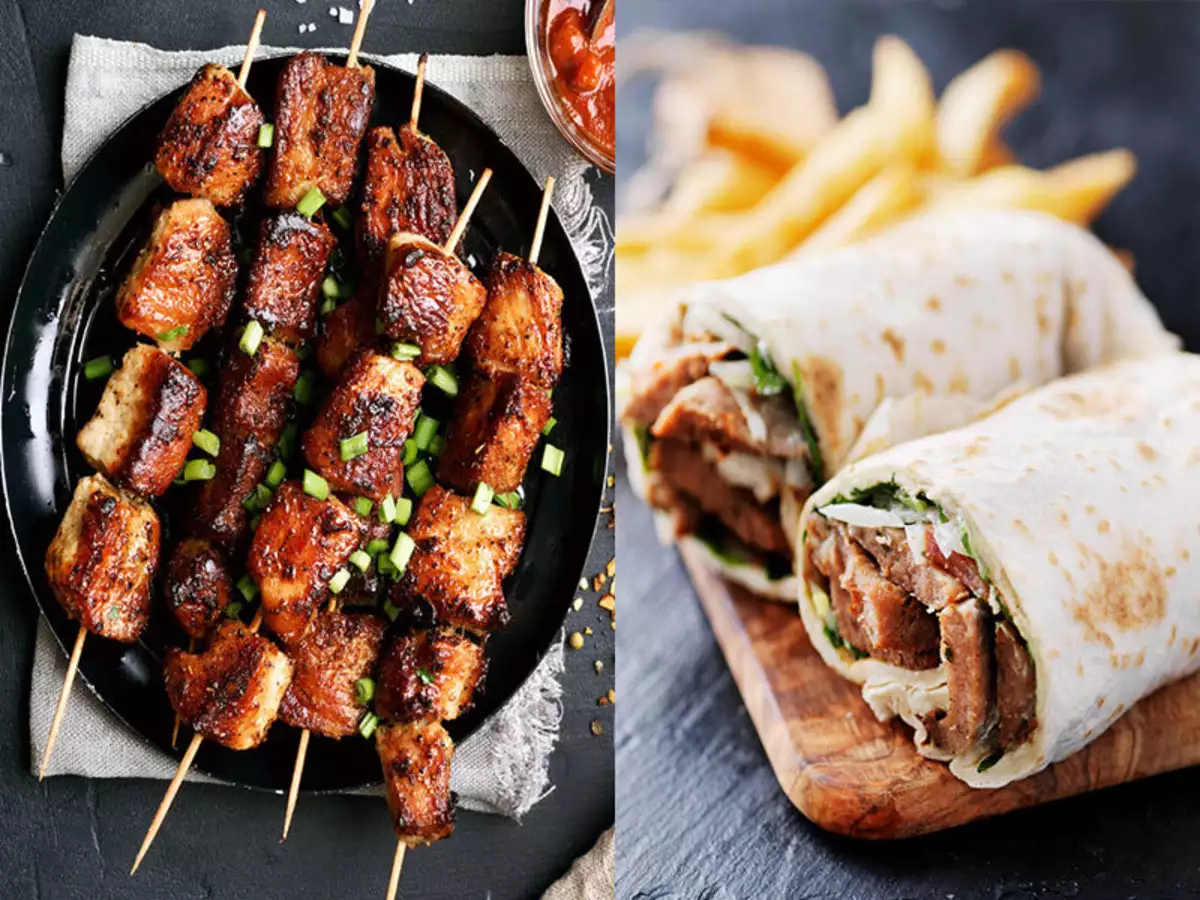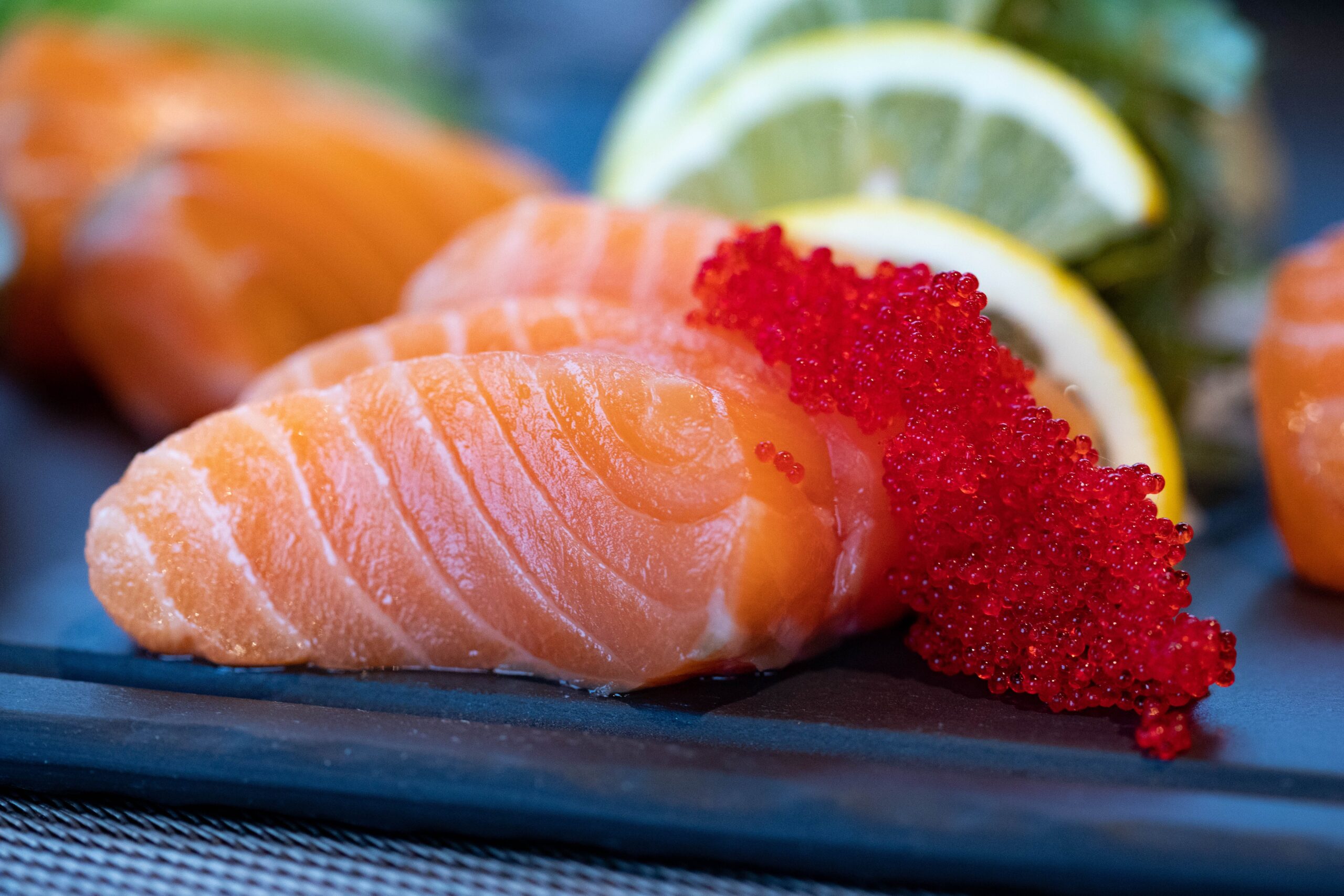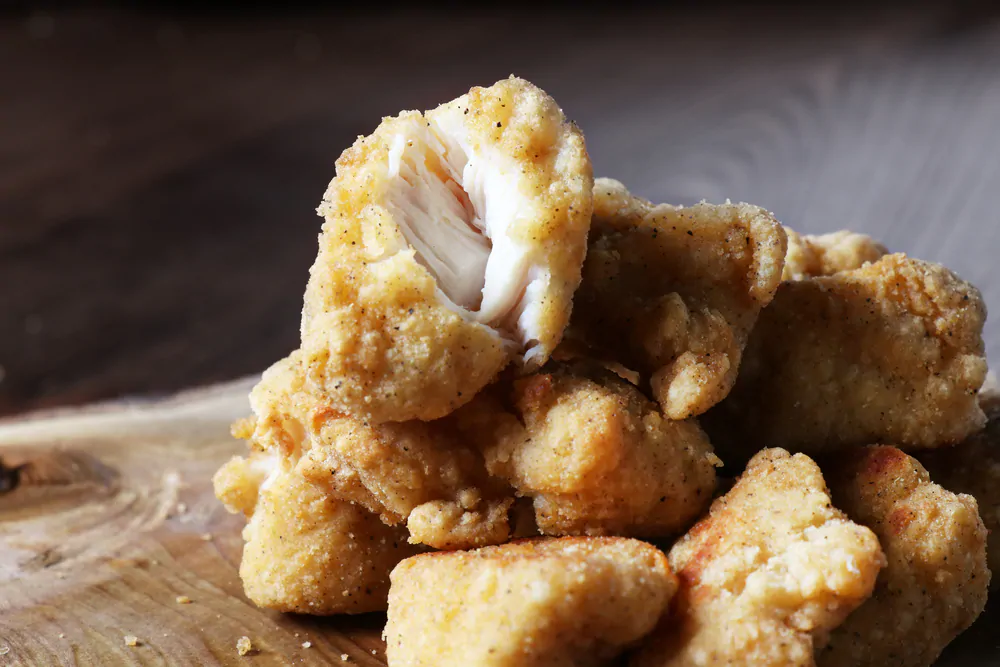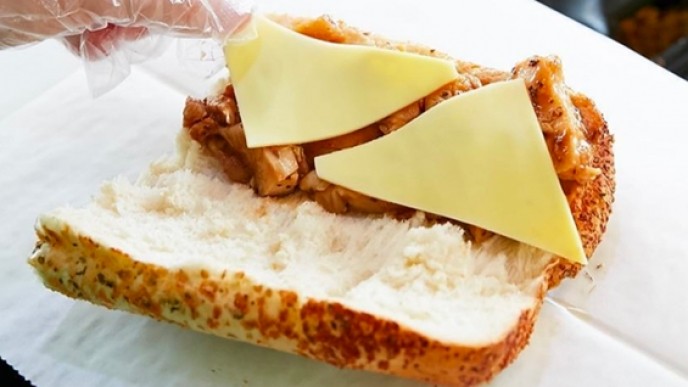Comparing Doner Kebab and Shish Kebab reveals distinctions in cooking style—vertical rotisserie vs. skewering—and meat preparation. Both involve marinated meat but differ in serving and grilling methods.
The Doner Kebab and Shish Kebab are two popular and culturally significant variations of the kebab.
Now, are you often confused when deciding between a doner and shish kebab? You’re not alone!
Many people are in a predicament when standing in front of a kebab shop menu. The key differences between these two delectable dishes can sometimes be bewildering.
We’re here to assist you in making well-informed decisions when you visit your favorite kebab restaurant next time.
Doner Kebab Vs Shish Kebab – The Key Differences
The Doner Kebab, a gyro or shawarma, is a Turkish-origin dish made from succulent, seasoned meat (usually lamb or chicken) that is vertically slow-cooked on a rotating spit.
Out served in warm pita bread or flatbread, it is typically garnished with fresh vegetables, sauces, and toppings.
On the other hand, the Shish Kebab, originating from the Middle East, consists of skewered and grilled chunks of marinated meat, often served with grilled vegetables and a side of rice or bread.
Both kebab variations enjoy immense popularity worldwide, not only for their delicious flavors but also for their cultural significance as beloved street foods.
Here are the Key differences between the Doner and Shish kebab that’ll help you make the informed decision of choosing your favorite item.
1. Meat Preparation and Cooking Method:
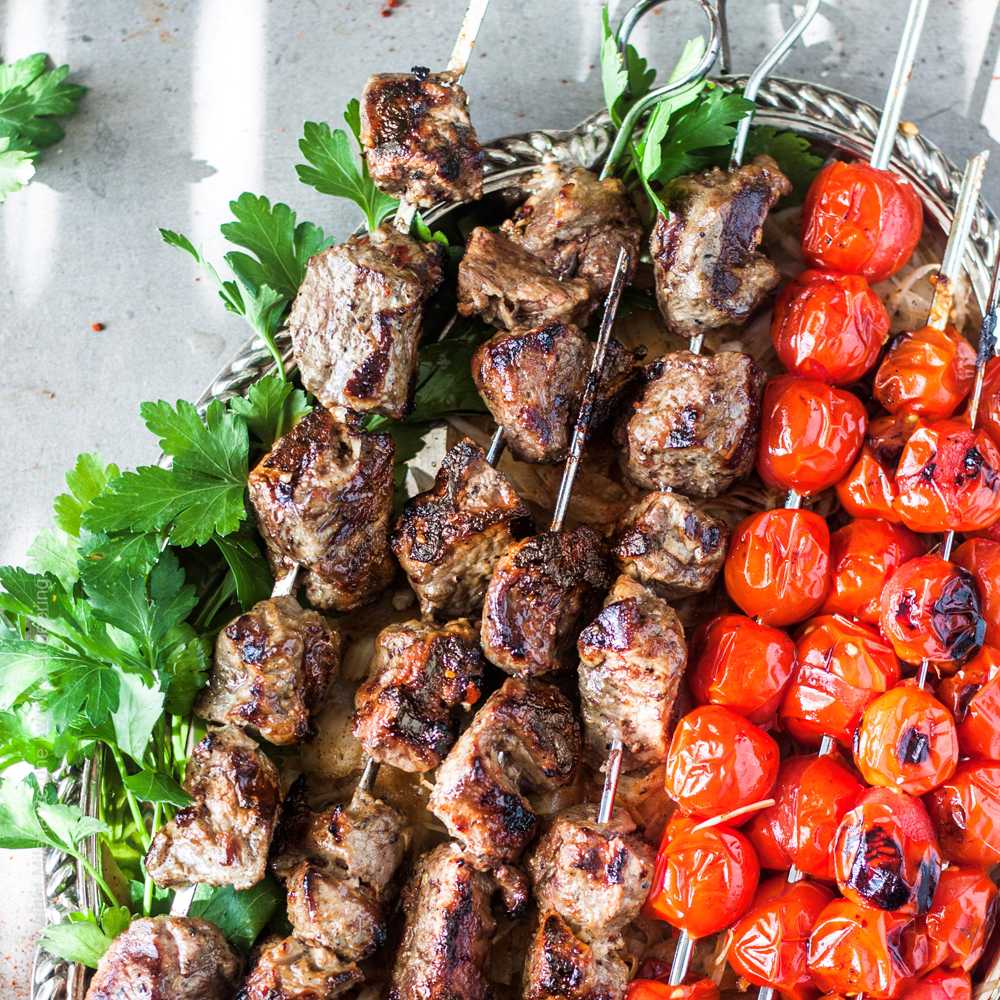
Doner Kebab: Doner kebab is made from layers of seasoned meat, often beef, lamb, chicken, or a mixture, which are stacked on a vertical rotisserie.
The meat is cooked gradually while rotating, ensuring even cooking and a crispy outer layer.
Shish Kebab: Shish kebab involves skewering small pieces of marinated meat, such as beef, lamb, chicken, or even vegetables, onto metal or wooden sticks.
The skewers are then grilled or roasted over an open flame or on a grill.
2. Eating Occasions:
Doner Kebab: Doner kebab is frequently associated with on-the-go eating due to its availability in street food stalls and fast-food outlets.
It’s a popular choice for a quick meal; the following places are suitable for preparing the Doner Kebab.
- Street Food and Fast Food: Doner kebab is often associated with quick and convenient meals. Its portable nature makes it a popular street food and fast-food option, offering a satisfying and flavorful bite on the go.
- Late-Night Snacking: In many cultures, especially in urban settings, Doner kebab establishments are open late into the night, making it a favored choice for post-nightlife snacking.
- Casual Dining: Doner kebab restaurants serve as casual dining spots where individuals, families, and friends can enjoy a hearty meal in a relaxed setting.
- Celebrations and Gatherings: Doner kebab’s versatility allows it to be served at various gatherings, parties, and celebrations, offering a communal and flavorful dish for larger groups.
Shish Kebab: Shish kebab is often enjoyed as a sit-down meal, suitable for gatherings and barbecues. Its skewered format makes it great for sharing and social occasions.
However, the Shish kebab’s rich flavor and versatility make it suitable for multiple occasions, including,
- Outdoor Grilling and Barbecues: Shish kebabs are often associated with outdoor grilling and barbecues, where the skewered meat and vegetables are cooked over an open flame, making it a popular choice for gatherings and picnics.
- Special Celebrations and Festivals: In Middle Eastern and Mediterranean cultures, shish kebabs are served during special occasions and festive gatherings, symbolizing communal feasting and tradition.
- Restaurant Dining: Shish kebabs are featured on Middle Eastern and Mediterranean restaurant menus, providing patrons with a flavorful and visually appealing dish in a restaurant setting.
- Casual Meals and Street Food: While shish kebabs can be enjoyed in a casual dining environment, they’re also found as street food, offering a convenient and delicious option for those seeking a quick meal.
3. Meat Texture and Flavor:
Doner Kebab: Due to the slow vertical cooking method, doner kebab meat becomes tender and succulent on the inside while acquiring a crispy and flavorful outer layer.
The layers of meat are often marinated with a mixture of spices, herbs, and seasonings.
Shish Kebab: Shish kebab features individual pieces of meat that are marinated for a shorter period and then cooked on high heat. The meat retains a firm texture and a distinct smoky flavor from the open flame grilling.
4. Presentation and Serving:
Doner Kebab: Doner kebab is typically sliced thinly from the rotating vertical spit and served in various ways, such as wrapped in pita bread with salad, sauce, and sometimes fries or served as a platter with rice and vegetables.
Shish Kebab: Shish kebab is served as individual skewers, often accompanied by sides like rice, grilled vegetables, and sauces. It can also be served on a platter or in a wrap, but the presentation focuses more on the skewered meat itself.
5. Origin and Culinary Influence:
Doner Kebab: Doner kebab has its roots in Middle Eastern cuisine, particularly in Turkey and the Levant region. It has become immensely popular across Europe and beyond, often adapted to local tastes.
Shish Kebab: Shish kebab is also rooted in Middle Eastern cuisine and has a long history in various cultures. The term “shish” actually means “skewer” in Turkish. It is a traditional way of grilling meat that has been embraced and modified by many cultures worldwide.
6. Cultural Variations:
Doner Kebab: The cultural variations of the Doner Kebab are diverse and influenced by its migration across regions. Originating in Turkey, it has evolved into unique forms globally.
In Germany, it’s served in flatbread with vegetables and sauces. Greece’s “gyro” features similar meat preparation, while Arab countries offer “shawarma.”
Each adaptation embraces local spices, ingredients, and culinary techniques.
This cultural diffusion underscores the Doner Kebab’s versatility as a cultural fusion, embodying both tradition and adaptation in different parts of the world.
Shish Kebab: The Shish Kebab’s cultural variations showcase its adaptability across different cuisines.
Originating in the Middle East, it’s transformed in diverse ways. Indian “seekh kebab” uses minced meat and aromatic spices.
In Persian cuisine, “koobideh” features ground meat seasoned with saffron and sumac. Mediterranean versions highlight local flavors and ingredients, while Southeast Asian satay utilizes skewered and grilled meats served with peanut sauce.
This culinary evolution reflects the Shish Kebab’s integration into global cuisines, adapting to regional palates while maintaining its essence as a skewered and grilled delicacy.
7. Culinary Equipment:
Doner Kebab: The preparation of a traditional doner kebab requires specialized vertical rotisserie equipment to stack and cook the layers of meat.
For preparing the doner kebab, you’ll need the following equipment,
- Vertical Rotisserie Grill: Essential for the traditional method, this grill allows the meat to be stacked on a vertical spit, cooking slowly and evenly as it rotates.
- Skewers: This is used to layer the marinated meat and create the vertical stack, ensuring even cooking and flavor infusion.
- Vertical Spit Mechanism: Required to hold and rotate the meat as it cooks, ensuring it’s evenly exposed to heat and cooked to perfection.
- Meat Slicer: After cooking, a meat slicer is used to shave thin slices of the cooked meat, ready to be served in sandwiches or wraps.
- Marination Bowls: For marinating the meat before cooking, allowing it to absorb flavors and spices for enhanced taste.
- Ingredients and Spices: Essential for marination, include a mix of spices, herbs, and seasonings to infuse the meat with rich flavors.
- Preparation Tools: Knives, cutting boards, and other utensils for slicing vegetables, preparing accompaniments, and assembling the final dish.
Shish Kebab: Shish kebab can be prepared using basic grilling equipment, such as skewers and a grill or open flame.
For preparing the Shish kebab, you’ll need the following equipment,
- Skewers: Essential for threading marinated meat and vegetables, creating kebab combinations for grilling.
- Grill or Barbecue: The primary cooking apparatus, where skewered kebabs are placed over an open flame or heat source.
- Marination Bowls: Used for marinating the meat and vegetables, infusing them with flavors, and tenderizing the meat.
- Cutting Board and Knife: Necessary for preparing and cutting the meat and vegetables before skewering.
- Basting Brush: Applying marinade or oil during grilling enhances flavors and prevents dryness.
- Charcoal or Gas: Fuel source for the grill or barbecue, providing the necessary heat for cooking the kebabs.
- Tongs or Grill Spatula: Utensils for flipping and maneuvering the kebabs during grilling.
- Preparation Tools: Additional utensils for handling ingredients, assembling kebabs, and ensuring a seamless grilling process.
In summary, while doner and shish kebab are beloved dishes originating from Middle Eastern cuisine, they differ in their meat preparation.
Also, their cooking methods, presentation, and cultural influences lead to distinct culinary experiences and occasions for enjoying each dish.
Doner Kebab Vs Shish Kebab – The Similarities
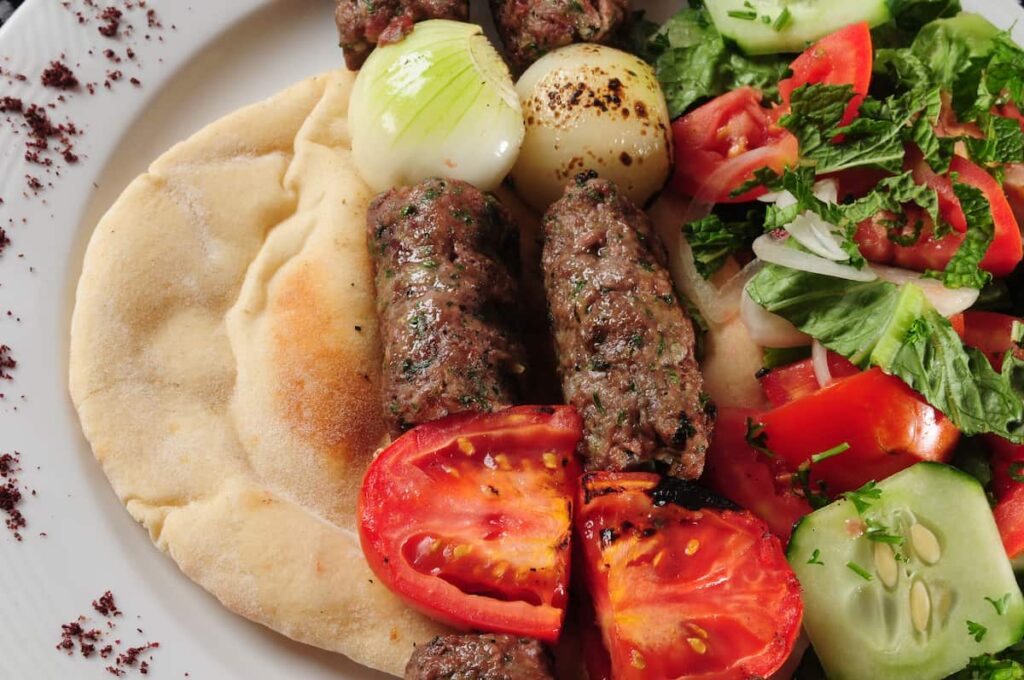
Both Doner Kebab and Shish Kebab are popular dishes enjoyed by people around the world. While they have distinct characteristics, several similarities tie these two types of kebabs together.
Here are the key points of similarity between Doner Kebab and Shish Kebab, along with in-depth explanations:
Kebab Origins:
Doner Kebab: The Doner Kebab has its roots in Turkish cuisine. The word “doner” itself means “turning” in Turkish, referring to the meat’s cooking method.
Shish Kebab: Shish Kebab also has Turkish origins. The term “shish” translates to “skewer” in Turkish, which aptly describes the cooking technique used for this kebab.
Both kebabs emerged from the tradition of skewering and grilling meat over an open flame, a practice that dates back centuries in Turkish culture.
Cooking Method:
Doner Kebab: Slices of seasoned meat (typically lamb, beef, chicken, or a mix) are stacked on a vertical rotisserie. The meat rotates and cooks as it’s shaved off in thin layers for serving.
Shish Kebab: Chunks of marinated meat (commonly lamb, beef, or chicken) are skewered and grilled over an open flame. The skewers allow for even cooking and caramelization of the meat’s surface.
Both kebabs involve grilling meat, which imparts a smoky flavor and a desirable charred texture to the final dish.
Seasoning and Flavor:
Doner Kebab: The meat for Doner Kebab is often seasoned with a blend of spices, herbs, and sometimes garlic. The layered cooking method allows the spices to infuse throughout the entire stack of meat.
Shish Kebab: Shish Kebab meat is typically marinated in a mixture of oil, acidic ingredients (like lemon juice or yogurt), herbs, and spices. This marinade enhances the meat’s flavor and tenderness.
Both kebabs rely on flavorful marinades and seasonings to create a rich and aromatic taste profile in the cooked meat.
Serving Styles:
Doner Kebab: Doner is often presented as a sandwich or wrap, enclosed in flatbreads like pita or lavash. The shaved meat is often accompanied by vegetables, sauces like tahini or yogurt, and sometimes pickles.
Shish Kebab: Shish Kebab is typically served as skewered meat pieces, often with grilled vegetables, rice, and flatbreads on the side.
Both kebabs offer versatile serving options, whether as a handheld meal or plated dish, providing a satisfying combination of textures and flavors.
Global Popularity:
Doner Kebab: Doner Kebab gained worldwide popularity through adaptations like the “gyro” in Greece and the “shawarma” in the Middle East. It’s now enjoyed in various forms across Europe and beyond.
Shish Kebab: Shish Kebab has also transcended its Turkish roots and is beloved across the Middle East, Europe, North America, and beyond.
Both kebabs have experienced globalization and adaptation in different cultures, contributing to their widespread appreciation.
In conclusion, while Doner Kebab and Shish Kebab have distinct cooking methods and serving styles, their shared Turkish origins, grilling techniques, flavor-enhancing methods, and global popularity tie them together in the broader category of delicious kebab cuisine.
Doner Kebab Vs Shish Kebab: Make Your Own Choice
When it comes to Doner Kebab vs Shish Kebab, both have their unique qualities. Doner Kebab is typically made with stacked, marinated meat, while Shish Kebab features skewered, grilled chunks of meat.
Doner Kebab offers a flavorful and juicy experience, while Shish Kebab provides a grilled and slightly smoky taste. Consider your preference for texture and cooking methods to decide between the two.
If you love the juicy taste of kebab, probably you’ll like the doner kebab. Contrarily, if you like the smoky flavor or kebab, you must fall for the Shish kebab.
However, both kebabs are delicious options, so it ultimately depends on your personal taste.
FAQs
1. What is the main difference between Doner Kebab and Shish Kebab?
The main difference lies in their preparation and cooking methods. Doner kebab features meat stacked on a vertical rotisserie, while shish kebab consists of skewered pieces of marinated meat cooked on a grill or open flame.
Are the meats used in both kebabs the same?
Yes, the meat used in both kebabs can be the same. Typically, beef, lamb, chicken are used as the fillings of doner and shish kebab.
Even the Vegetables within the kebabs can be similar if you consume the kebabs from the same restaurant.
3. How are the meats cooked in Doner Kebab and Shish Kebab?
The stacked meat rotates on a vertical spit in Doner kebab, cooking slowly. Shish kebab involves skewering small pieces of marinated meat and grilling them over direct heat.
4. Which kebab is typically served in a wrap?
Doner kebab is commonly served in a wrap, often with pita bread, salad, sauce, and sometimes fries.
5. How are Shish Kebabs presented?
Shish kebabs are presented as individual meat skewers, often accompanied by rice, vegetables, and sauces.
6. Which kebab has its roots in Middle Eastern cuisine?
Both doner and shish kebab have Middle Eastern origins, with doner kebab being particularly associated with Turkey and the Levant region.
7. Are there cultural variations of these kebabs?
Yes, both kebabs have cultural variations. Doner kebab can be found with different toppings and sauces based on the region. Shish kebab variations focus on marinades and spices.
Conclusion
The key differences between doner and shish kebab lie in their preparation and presentation.
While the doner kebab is made by layering meat on a vertical rotisserie and shaving it off when cooked, the shish kebab involves skewering small pieces of marinated meat and grilling them.
However, both variations of kebab offer a delicious and versatile dining experience.
It is recommended to try both to fully appreciate the unique flavors and textures they offer and make a personal choice based on individual preferences.







